Delicate forget-me-not flowers in the photo
Forget-me-not, an inconspicuous tiny and delicate flower, is a real decoration of our fields and meadows. Growing in large lawns, the plants form a patterned carpet of extraordinary beauty. It is not surprising that gardeners do not perceive forget-me-not as a weed, but grow on plots for decorative purposes. The popularity of this flower is very high not only in the gardens of our country, but also in Europe, especially in England, Germany, France, Sweden.
Content:
- Forget-me-not - a flower revered by the people
- Types and description of forget-me-nots
- Flowering and fruiting
- Reproduction
- Growing conditions
- Diseases
Forget-me-not - a flower revered by the people
This flower is not easy, more than one legend has been composed about it, more than one song has been sung. In the folklore of different countries forget-me-not associated with loyalty and good memories. There are many popular names for the flower: in the old days people called forget-me-not as a beauty, gourd, feverish grass. One of the beliefs says that a wreath of these wonderful flowers should be put on the neck of the beloved, and then no separation is terrible for the feelings of the two!
Types and description of forget-me-nots
Forget-me-not is widespread throughout the world. In total, there are about 50 species of this plant, of which 35 grow in the vastness of the former Soviet Union. There are annual species, mostly perennials, often grown as biennials. Most often they grow forget-me-not marsh, alpine, garden, forest and rasstavnotsvetkovuyu.
Forget-me-not bushes are branched, about 30-40 cm high. The flowers of the plant are small, five-leafed, collected in inflorescences. They are usually blue or blue, sometimes white or pink. The middle of the flower is always yellow. Oblong lanceolate leaves of gray-green color are covered with hairs on both sides. Leaves are arranged alternately along the stem.
Flowering and fruiting
The flowering period of the plant is from May to June, after which fruiting begins. In place of the flowers, a shiny, dark, egg-shaped nut with a slightly compressed shape is formed.
One plant produces about 700 seeds that remain viable for several years. They are poured out on the ground, and if the seeds are not picked up, self-seeding occurs: in the fall, rather large bushes are obtained from them. So the plant can grow throughout the garden over several seasons.
To avoid unwanted self-seeding, faded parts of the plant must be removed in time.
Reproduction
Plants reproduce by seeds, less often - cuttings... The seeds are kept in salt water before planting. The unfit ones - those that float - are thrown away, and the rest are dried and planted in moist soil with peat to a depth of no more than 5-6 mm.
After about a week and a half, seedlings appear. After the seedlings put out real leaves, they need to be planted at a distance of about 3 cm from each other or in separate containers. Plants will develop until late autumn. Closer to winter, boxes with forget-me-nots are transferred to open greenhouses so that the plant will survive the cold under the snow.
In the last week of April, mature plants can be planted in beds or flower beds. Flowering will occur in May. Transplant forget-me-nots can be done at any time, even during flowering, since their root system is superficial.
If you want to get flowering plants in the first year, you can propagate forget-me-nots with apical green cuttings 5 cm long.They are planted in a damp, shady spot in the garden between May and June. The earlier cuttings are carried out, the higher the likelihood that a lush bloom will occur at the end of summer, which will not have the best effect on the beauty of flowers next year. With later cuttings, a small bush will grow by the fall, and it will bloom in full force in the next warm season.
Especially often they resort to grafting when propagating varietal forget-me-nots.
Growing conditions
Forget-me-nots grow well in partial shade. This is due to the fact that they prefer moderately moist soils. Subject to this condition, the plants feel great in open places. The soil is preferable light, humus and loose.
If the soil is oversaturated with fertilizers, especially fresh manure, the plant develops unevenly, and leaves grow too rapidly.
When watering care must be taken that the water does not stagnate and does not cause root rot. In case of insufficient watering, the plant dries out, and forget-me-nots quickly fade. Less infrequent and deep watering is preferable to frequent and shallow watering.
Weeding beds with forget-me-nots is almost not required, because they grow in very dense rows and in shady places. It is difficult for weeds to compete in such conditions.
Diseases
Forget-me-nots suffer mainly from false powdery mildew and gray root rot. For prophylactic purposes against rotting on the 10th day, the seedlings are sprayed with the Hom preparation. Fungicides are used to combat powdery mildew. When slugs, aphids, cruciferous fleas appear on plants, insecticides are used.
Even a novice gardener can grow forget-me-not on your site, because this culture is considered unpretentious. The vigor of the flower is maintained even after cutting it for two weeks. This property is widely used in the preparation of spring bouquets and flower arrangements. How often they can be seen in photographs and paintings, and the modest forget-me-not invariably embodies the blue of the sky, the splashes of the sun and the final arrival of spring!




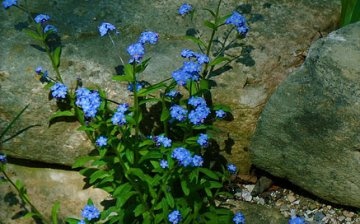
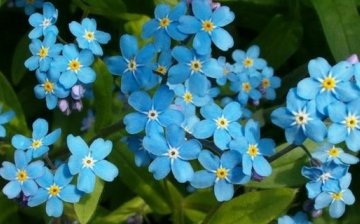
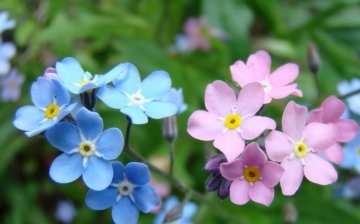






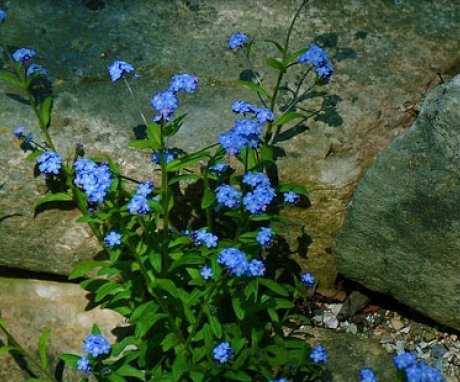

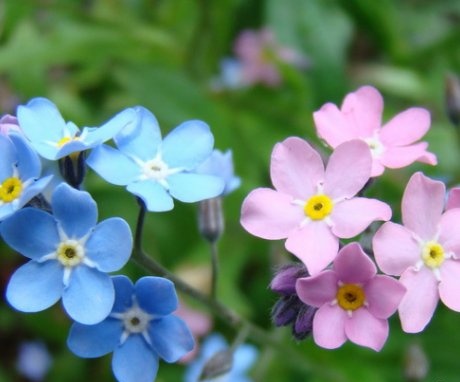
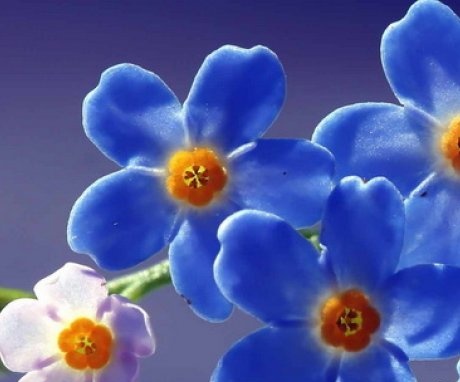
Interestingly, but it always seemed to me that forget-me-nots are capricious flowers. You will need to try to grow them.